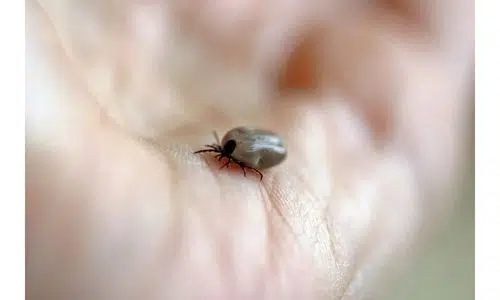Cancer is a frightening word, and if your dog has mouth cancer, you will undoubtedly have a lot of questions. What is the life expectancy of a dog with mouth cancer if treatment is not given? What are the symptoms, and what is the prognosis? Mouth tumors can cause blockages that make it hard for pets to chew and swallow, making it hard for them to eat and get the nutrients they need to stay healthy. Surgical removal of tumors is frequently required for a dog’s survival, however, it isn’t always achievable depending on the nature and location of the tumor. Here are some symptoms and causes to look for, as well as treatment choices and the life expectancy of a dog if they have mouth cancer.
What Causes Canine Mouth Cancer?
There are a few possibilities, but it is not yet feasible to pinpoint what causes cancerous cells or tumors to grow in a dog’s mouth. Because they are more common in some dog breeds than in others, it is thought that genes have something to do with them. Oral malignancies tend to happen most often in German Shepherds, Boxers, and Golden Retrievers.
#1. Inhaled Carcinogens
Carcinogens are all around us, and dogs are constantly exposed to them. Carcinogens may be ingested by dogs as they sniff the ground and everything else in their vicinity. Then, chemicals that cause cancer can take hold and affect nearby cells, which can lead to abnormal cell growth and cancer.
#2. Ingested Carcinogens
Carcinogens may be consumed by dogs. A study found a possible link between some commercial dog foods and mouth cancer in dogs. Some brands do incorporate chemical preservatives and pesticides in their formulas, which may be carcinogenic, but more research is needed to confirm these preliminary findings. Also, up to 60% of the carbs in commercial dog food make the dog more likely to get cancer.
Symptoms and Types of Oral Cancer in Dogs
The most common types of oral cancer in dogs are melanoma, squamous cell carcinoma, and fibrosarcoma. They all cause comparable symptoms, which typically include some or all of the following:
- Excessive drooling
- Bad breath (halitosis)
- Difficulty chewing (dysphagia) or drinking
- Blood coming from the mouth
- Oral pain
- Weight loss
- Loose teeth
- Visible mass in the mouth
- Enlarged lymph nodes in the neck (occasionally)
- Swollen or deformed areas on the face
Dog Mouth Cancer Life Expectancy
When it is diagnosed and treated, the life expectancy of a dog with mouth cancer is heavily impacted.
- If a dog has no medical care, their life expectancy will be approximately two months.
- If a dog undergoes surgical treatment, the typical life expectancy ranges from five to seventeen months.
- Radiation therapy dogs often live seven to twelve months.
- It has been discovered that the Merial melanoma vaccine increases the life expectancy of a dog by seven to thirteen months. Dogs who receive the vaccine as well as surgery or radiation can live for up to two and a half years after diagnosis.
If mouth cancer is found in the tonsils, dogs with oral squamous cell carcinoma have a very low life expectancy.
- Surgery on lower jaw tumors (mandibulectomy) results in an average survival span of 19 to 26 months.
- Dogs who receive upper jaw surgery (maxillectomy) have an average survival period of 10 to 19 months.
- Dogs who receive radiation therapy have a survival duration of 15 to 16 months, though this can be extended to 34 months with surgery.
Dog Mouth Cancer Life Expectancy Without Treatment
Many dogs can live for a very long time without treatment. The caveat is that oral tumors can be highly painful, causing trouble eating and causing bone damage. Although the tumor won’t directly cause death, the poor quality of life will be a major concern. Many dogs will have to be put down because they are in chronic pain and refuse to eat.
Dogs with mouth cancer are often put to sleep because their quality of life is getting worse or cancer has spread to their lungs. Oral cancers in dogs may only live for two months without treatment.
The prognosis and life expectancy for each kind of cancer are varied. This article was written to help readers have a better understanding of dog mouth cancer and the life expectancy associated with each type.
Life Expectancy & Survival Rate by Mouth Cancer Type – With Treatment
Squamous Cell Carcinoma
- Many dogs will be disease-free for up to 26 months after surgery.
- Survival duration with surgery and radiation therapy ranges from 10 to 40 months.
- Tonsillar squamous cell cancer has a substantially worse prognosis and a much shorter life expectancy.
Malignant Melanoma
- The median survival time in dogs treated with surgery is reported to be 219-273 days.
- Dogs can live for up to 211-363 days with radiation.
- Large tumors or dogs with metastatic disease have a prognosis of only 164 days after surgery.
Fibrosarcoma
- After surgery, dogs may have a median survival time of 10.6 months, with 50% surviving to one year.
Diagnosis
As part of a full health checkup, your vet will look in your dog’s mouth for tumors or other problems. Sedation may be required. Bloodwork and urinalysis will provide information about your dog’s overall health and are required to determine an appropriate course of treatment.
A CT scan or MRI of your dog’s mouth may be recommended to determine how invasive the tumor is. X-ray scans of your dog’s chest may show whether the tumor has spread from the mouth to the chest.
A tissue biopsy will be performed to determine the type of cancer present. In some cases, the entire visible mass can be taken out and sent away to be identified. In other cases, only a small piece of the tumor should be taken out to better prepare for surgery and other treatments that may be needed in the future.
The veterinarian may also take a small sample of lymph nodes to see if there are any cancerous cells.
Treatment for Dog Mouth Cancer
Treatments for various types of mouth tumors vary, according to the Pet Cancer Center. However, the following are the most successful dog mouth cancer treatments:
- Surgical removal of tumorous growths
- Cryosurgery, or the freezing of tumor material
- Radiation therapy at the site
The most common way to treat oral cancer is with surgery, which is done by a vet who specializes in oral procedures. During surgery, the tumor or part of the jaw to which it is attached may be removed, and then the area may be rebuilt. If the tumor has progressed deeper into your dog’s mouth, it may be necessary to remove teeth, gums, as well as a portion of his jaw and cheekbone.
High-energy radiation beams are used in radiation therapy to kill cancer cells without hurting healthy tissue nearby. This treatment is put directly into the affected areas by a machine at regular intervals over several weeks until all contaminated cells have been killed.
Chemotherapy is the process of injecting drugs directly into tumors while they are still growing. This lets drugs get to parts of the body that surgery alone wouldn’t be able to reach.
Holistic therapies, like taking herbal, mineral, and vitamin supplements, can sometimes be used to help with more serious treatments. Treatment can be costly, with one tumor removal costing $1,000 to $2,000, plus extra care costs such as blood tests, X-rays, medications, and more.
Melanoma Vaccine
Merial developed ONCEPT® Melanoma, a vaccination, to enhance the life expectancy of a dog with stage II or stage III mouth cancer. ONCEPT is given to dogs with oral cancer to make their bodies stronger against cancer cells. This is different from a vaccine, which is given to stop a disease from happening.
According to Merial’s studies, a dog’s life can be extended by one to two years if the dog also receives surgery or radiation treatment. ONCEPT can only be obtained through a veterinary oncologist, and the cost will vary according to your veterinarian’s fee schedule, but you can expect to pay around $2,800.
Living and Management
After oral surgery or radiation therapy, dogs with oral tumors may require soft foods, hand-feeding, or a feeding tube. If part of your dog’s jaw has been taken away, he or she may have trouble eating and drinking until he or she learns how to make up for the missing teeth and bone.
Your veterinarian will also recommend pain medicines, antibiotics, and/or any other treatments that are required to keep your dog’s quality of life as high as possible.
How will Mouth Cancer Affect My Dog?
Your dog’s quality of life may be significantly affected by mouth cancer. These tumors appear in a variety of shapes, sizes, and styles. Some may even extend to distant organs, such as the lungs. Tumors can appear as growths on the gums, tongue, hard or soft palate, or both. Many of these tumors might get ulcerated or burst open and begin bleeding as a result of the high motion of the mouth. They may also get secondary infections.
Dogs with mouth cancer may experience pain and difficulty eating. Small tumors can grow deeper under the gum line and get into the jawbone below. In severe circumstances, this might result in bone fractures.
How Can I Make My Dog’s Life Better?
If your dog has mouth cancer, there are many things you can do as a dog owner to improve its quality of life. Because tumors can be invasive and cause chronic discomfort, pain management is essential. Antibiotics should be used to treat secondary infections. If dogs are not eating well, they may be given appetite stimulants to help them eat more.
A soft diet should be fed for comfort and to avoid tumor damage. To provide adequate nutrition to dogs who are too painful to eat, an esophagostomy tube is advised. To keep the tumor from getting sores and causing pain and bleeding, don’t eat or chew anything hard.
How fast does mouth cancer spread in dogs?
They grow swiftly, often affecting the underlying bone, and certain varieties spread easily to other parts of the body.
Is mouth cancer painful for dogs?
Yes. Oral pain is common, particularly in dogs with malignancies that have spread into the underlying bone.
What does cancer in a dogs mouth look like?
Bad breath, excessive drooling, bleeding from the mouth, difficulty chewing, clear evidence of oral pain, lost teeth, a visible lump or mass inside the mouth, swollen parts of the face, unwillingness to eat, and weight loss are the most typical symptoms of oral cancer in dogs.
How fast does oral cancer spread?
There are no hard and fast rules for determining whether or not oral cancer will spread. Size is more of a factor. At the time of diagnosis, moderate-sized oral cancer has a 20 to 30% risk of spreading to the lymph nodes.
How do I know if my dog with cancer is suffering?
It may sound vague, but if your dog begins to exhibit any unusual behavior, it could be a sign of suffering. Limping is one of the most typical indicators of discomfort in dogs. Appetite loss.
What are the final stages of cancer in dogs?
Be alert to your dog’s signals of pain, discomfort, or distress. These symptoms often stand out and can be a clear sign that euthanasia should be thought about: Breathing that appears to be labored: difficulty catching their breath; short, shallow breaths; or wide, deep breaths that appear to be labored. Lethargy and a lack of appetite.






